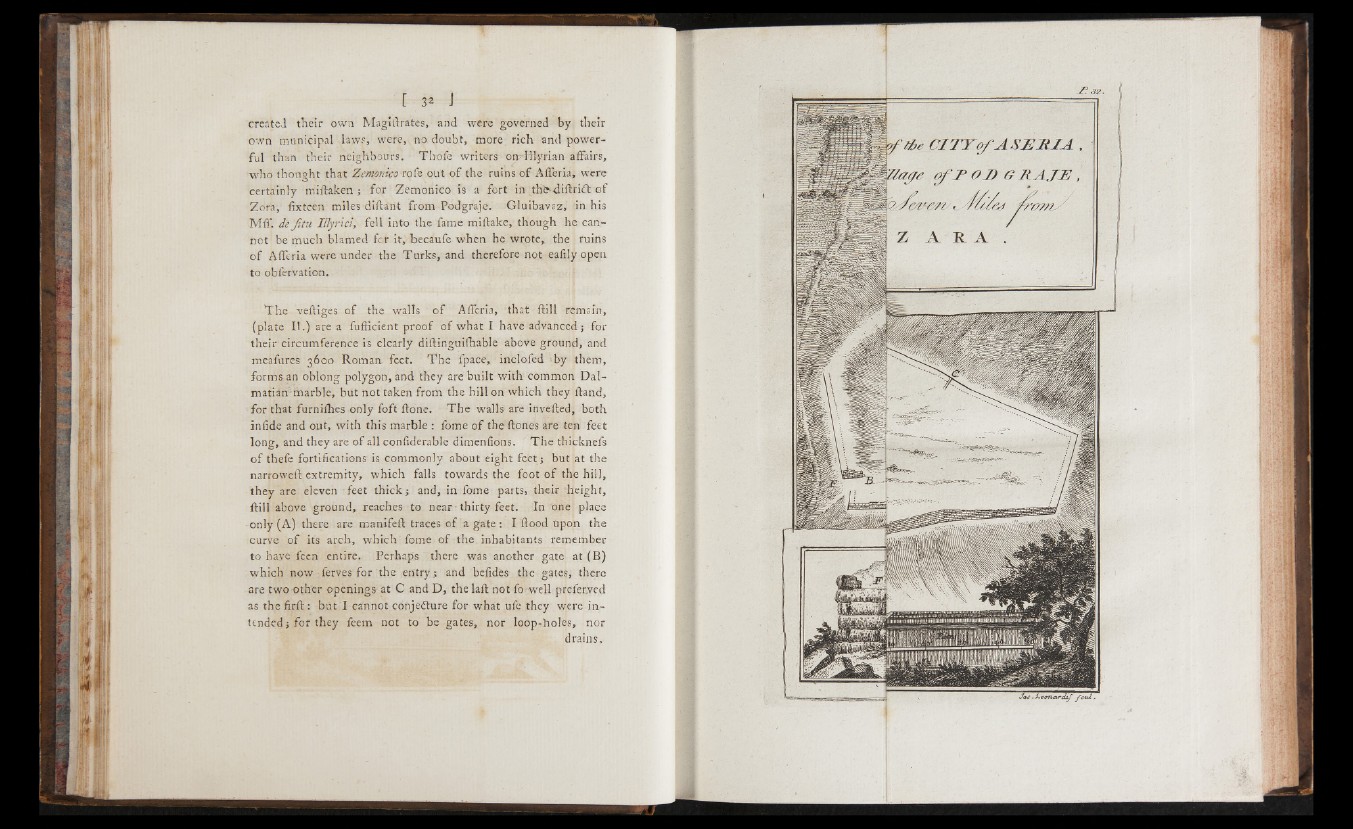
created their own Magistrates, and were governed by their
own municipal laws, were, no doubt, more rich and powerful
than their neighbours. Thofe writers omIllyrian affairs,
who thought that Zemonico rofe out o f the ruins o f Afferia, were
certainly miftaken ; for Zemonico is a fort in thbdiftriil of
Zora, fixteen miles diflant from Podgraje. Gluibavsz, in his
Mil' de Jitu I/lyrici, fell into the fame miftake, though he cannot
be much blamed fcr it, becaufe when he wrote, the ruins
o f Afferia were under the Turks, and therefore not eafily open
to obfervation.
T h e veiliges o f the walls o f Afferia, that ftill remain,
(plate II.) are a fufficient proof o f what I have advanced; for
their circumference is clearly diftinguiihable above ground, and
meafures 3600 Roman feet. T he fpace, inclofed by them,
forms an oblong polygon, and they are built with common Dalmatian1
marble, but not taken from the hill on which they ftand,
for that furniihes only foft ftone. The walls are inverted, both
infide and out, with this marble : fome of the ftones are ten feet
long, and they are o f all confiderable dimenfions. The thicknefs
of thefe fortifications is commonly about eight feet; but at the
narroweft extremity, which falls towards the foot o f the hill,
they are eleven feet thick ; and, in fame parts, their height,
ftill above ground, reaches to near ■ thirty feet. In one place
only (A) there are manifeft traces of a gate: I flood upon the
curve o f its arch, which fome o f the inhabitants remember
to have fecn entire. Perhaps there was another gate at (B)
which now ferves for the entry; and befides the gates, there
are two other openings at C and D, the laft not fo well preferred
as the firft: but I cannot cdnjedture for what ufe they were intended;
for they feem not to be gates, nor loop-holes, nor
drains.